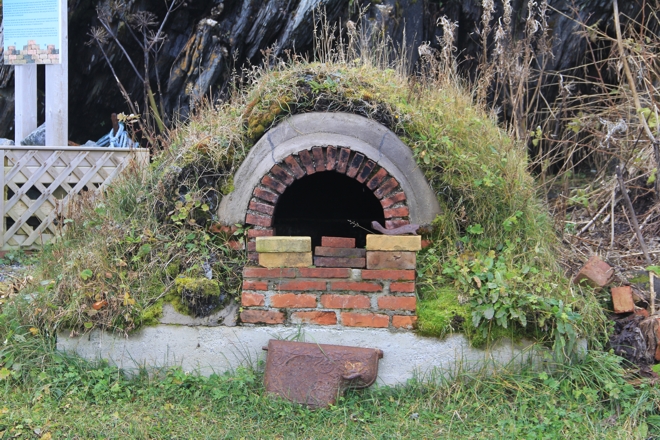Bread Ovens
Bread ovens are one of the more permanent structures found at fishing sites on the Petit Nord. Their importance to the migratory fishery is reflected in the carriage of hand-made bricks shipped out from France, with the fishing fleet, to the French Shore.
Ovens were constructed by creating a square or oval level surface with compacted stones, gravel or packed earth to form the foundation of the oven's baking floor. A dome of brick and/or stone, was then raised over the levelled floor to form a corbelled baking chamber or chapel. Brick tiles were then often used to frame the oven's mouth, to make the arch, the working shelf and to provide a suitable surface for the baking floor. The dome was insulated with clay, turf or other available materials. Bakers likely used native hardwoods, such as birch and alder, since they provide more heat than softwoods. Once the wood was reduced to embers, the baker spread these about the oven and and left them to consume themselves. When the oven reached correct temperature, the bricks turned from their typical red/brown colour to a yellow or whitish hue. The embers were then removed and the oven was cleaned in preparation for the bread dough being placed on the oven's baking floor. Bread ovens were probably also used to cook or heat other foods.
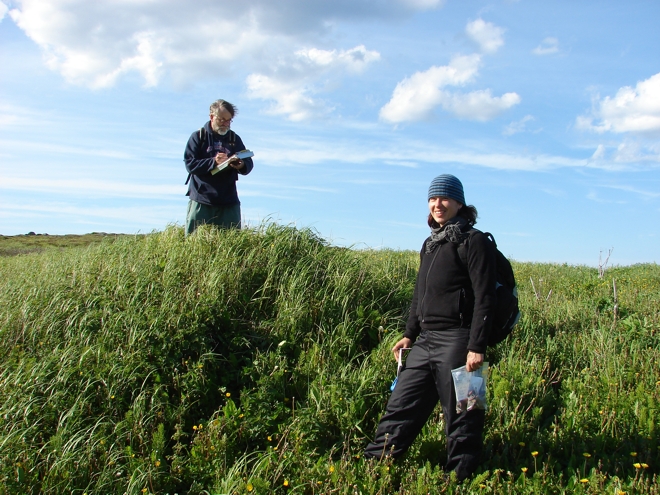
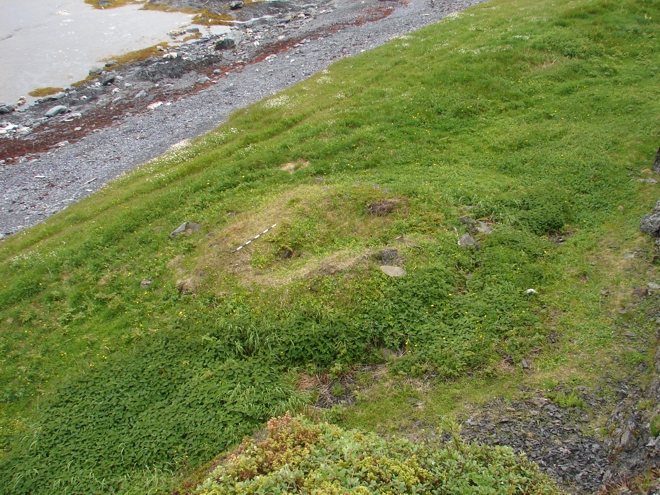
at Petites Ilettes Harbour (EhAw-02), near Four Harbour, Northern Peninsula.
has collapsed in on itself, at Grandchain Island, St Lunaire (EiAu-04).
The documentary and archaeological evidence both suggest that bread ovens were not a normal feature of French fishing rooms until the 19th century. Before that time, fishermen ate hard bread (biscuit), like other mariners. Following the French Revolution (1789) access to fresh bread may have been seen as an expression of the social equality promulgated by the new Republic.
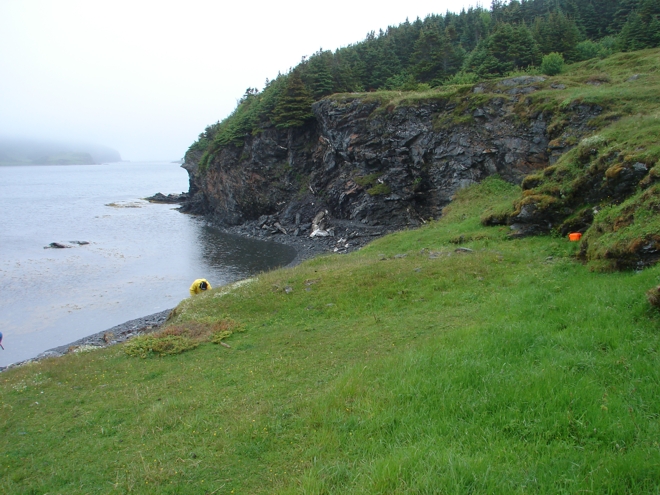
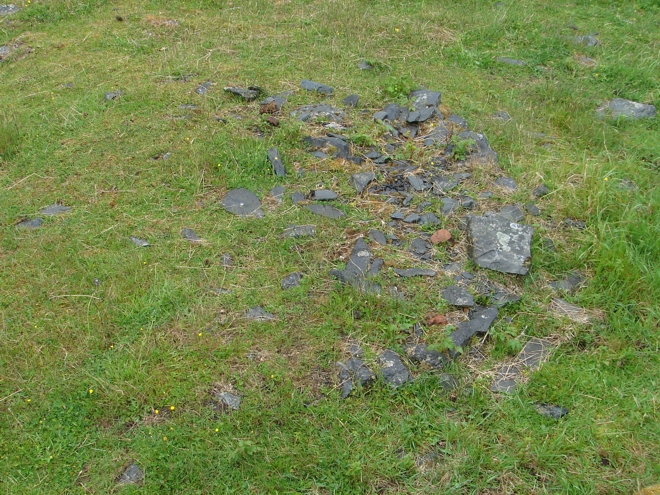
Ears Island, Griquet (EjAu-25).
Archaeology
Archaeologically, most remains of bread ovens are visible as amorphous mounds, about 2 to 3m wide and oval or dough-nut shaped. Many are found against rock faces or in sheltered rock niches, to maximise shelter and heat retention and perhaps also to ensure some separation from the messy business of fish preparation. The large bread oven excavated at the fishing room of Champ Paya (EfAx-09) in Cape Rouge Harbour nestles behind a large and prominent rock outcrop which offered suitable shelter and space for the preparation of bread dough and moulds outside the oven. The oven itself was built using brick tiles and local slate stone with its mouth to the north. Deposits of charcoal remains outside the oven provide evidence of the wood burnt and removed during the heating process, while numerous iron nails suggest the presence of a wooden structure erected over the oven. Ceramic finds also suggest that even before its construction in the first half of the 19th century, the area had an earlier history as a food preparation area.
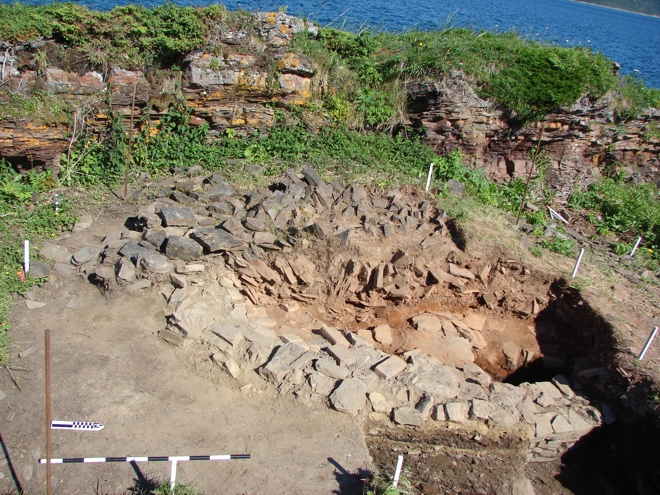
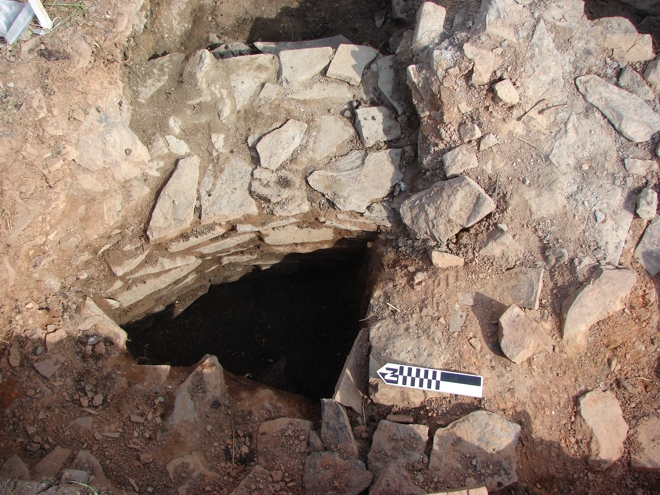
of the East side can be seen at the bottom of the image. The orange/brown deposits mark the interior of the
oven where baking took place. The oven had been deliberately collapsed when abandoned. Note how the oven is
situated in the shelter of a natural bedrock outcrop.
Feature 22).
Reconstructions
During the 2004 celebrations of the French presence in Atlantic Canada, local heritage commitees built a number of bread ovens; some reproduce the kind of communal ovens historically used in the fishery, some are closer to smaller domestic bread ovens. Three of the more authentic reconstructions can be visited in Quirpon and at Coachman's Cove and Shoe Cove on the Baie Verte peninsula.
